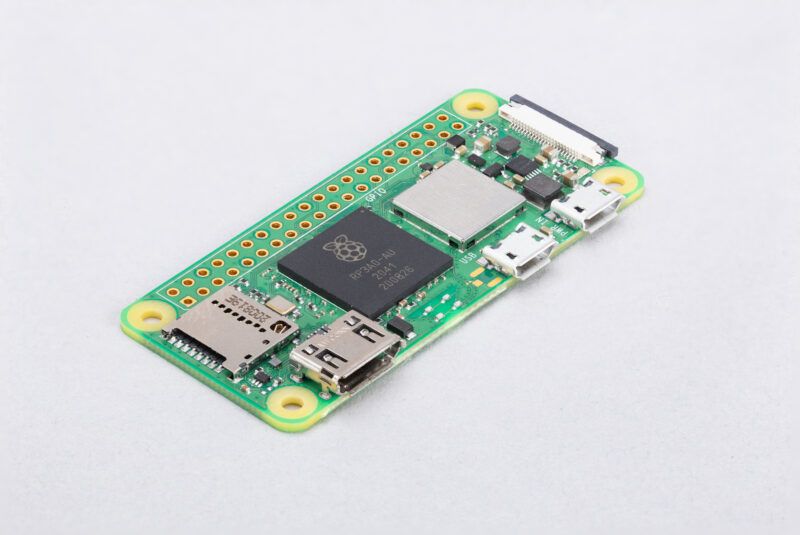The first Raspberry Pi arrived in 2012 as a low-cost ARM system board, originally intended as a basic PC for education and the hobbyist market. There have been many more models since then, some with hardware specifications that rival entry-level laptops, and others aimed at even lower-level workloads. The Raspberry Pi Foundation has now announced a new low-end model, the Raspberry Pi Zero 2 W, and it will only cost $15.
The original Raspberry Pi Zero was released in 2015 for the super-low price of $5, with a 1GHz single-core ARM CPU, 512MB RAM, and no USB ports (only USB-OTG through the microUSB power connector). The Raspberry Pi Zero W arrived in 2017, which mainly just added 802.11 b/g/n Wi-Fi and Bluetooth 4.1. This new model upgrades the SoC to the same Broadcom BCM2710A1 found in the launch version of the Raspberry Pi 3, with the ARM cores underclocked to 1GHz.
|
Specification |
Raspberry Pi Zero 2 W |
|---|---|
|
SoC |
|
|
RAM |
512MB LPDDR2 SDRAM |
|
Connectivity |
|
|
Ports |
|
|
Other Features |
|
The new board was made possible by a new system-in-package (SiP) design primarily created by Simon Martin at the Raspberry Pi Foundation. It avoids discrete SDRAM, which is used on the Raspberry Pi 2 and onwards, which in turn reduces manufacturing costs. The Raspberry Pi Zero 2 W also uses thick internal copper layers to conduct heat away from the processor. "We’ve found that in a 20C ambient environment, an uncased Zero 2 W can run our favourite LINPACK linear-algebra stress test indefinitely without throttling," the Raspberry Pi Foundation said in a blog post.
Just like the Raspberry Pi Zero W, this new board has Wi-Fi and Bluetooth built-in, so it's a great choice for projects that need internet or local wireless connectivity. The original Zero W has been used for DIY drones, skateboards, Game Boy retrofits, AirPlay speakers, and much more.
The Raspberry Pi Zero 2 W is available now in the United Kingdom, European Union, Untied States, Canada, and Hong Kong. Other regions will be added to the list as radio compliance work continues, which should be complete in Australia and New Zealand in November. However, the Pi Foundation says only about 200k units will be available this year, due to the global semiconductor shortage.

